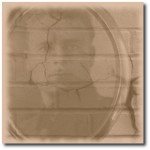Genealogy and Surnames
Irish Surname Resources
July 23, 2012 by ramona
Filed under Articles, Genealogy and Surnames, Introduction to Genealogy, Latest News
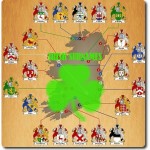 Are you an O’Mally or an O’Neil?
Are you an O’Mally or an O’Neil?
If you are a genealogy beginner in search of Irish surname resources you are in luck because you are among the millions of fortunate family tree fanatics who can draw from a wide variety of genealogy resources.
To get started you might want to check out this fantastic Irish Surname Infographic which gives an at-a-glance overview of the top twenty most common Irish surnames.
Other information you can find on the infographic include:
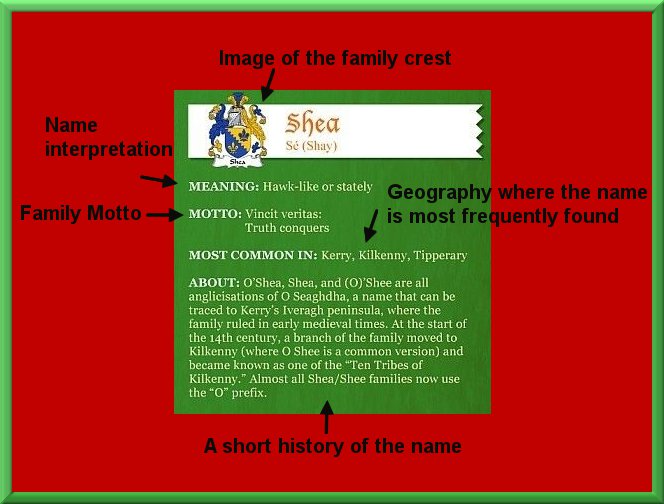
Another fantastic resource to check out is Irish Central an online magazine packed with all things Irish including an in depth article explaining the top 100 Irish surnames.If you already know about your Irish surname and you are ready to start digging deep for your Irish roots try stopping by Irish Genealogy where you can search almost three million pre-20th century Church records for FREE.
Want more resources? Try Genuki Ireland for links on where to research:
INFORMATION RELATED TO ALL OF IRELAND
|
|
Before you get started on your Irish family history research, don’t forget to download your Research tracking forms and Family Tree Charts. Available with your 30-Day FREE TRIAL MEMBERSHIP to Genealogy Beginner
Genealogy Brick Walls: The Problem of Names
March 8, 2012 by ramona
Filed under Articles, Genealogy and Surnames, Introduction to Genealogy, Latest News
Nothing can stop your family tree research in its tracks like not being able to find your ancestors records. Usually, this boils down to the big four problems of names.
- Common names give too many options
- Spelling variations lead to confusion
- Misspellings can frustrate your efforts
- Indexing errors…are a fact of genealogy research
Brick Wall Problems with Common Names
The issue with common names is that they offer too many possibilities. If your ancestor is Joe Smith or Ole Olson your main question is going to be which one is mine? For example, a quick search for Ole Oleson, born 1830 in Rendalen, Norway, returns 632 records. You are going to need to employ some hard-core search strategies to find your Ole Oleson.
Brick Wall Problems with Spelling Variations and Spelling Mistakes
At the time of the early census there was no standardization for the spelling of names, consequently names were often spelled phonetically. Add to this the fact that not everyone had access to education (your ancestor may not have been able to spell or write their name) and it is not hard to imagine why we come up with so many variations on a single surname.
Another common problem of the time was simple human error. Spelling mistakes occurred frequently and for the same reasons as stated above. Additionally, immigrant ancestors may not have had a strong enough grasp of English to catch errors or perhaps the census taker had a difficult time understanding them.
On the other hand, they may have altered their name to a more anglicized version or changed it altogether.
Brick Wall Problems with Indexing Errors
Thank goodness for the volunteers who spend hours transcribing documents, these wonderful people are the ones responsible for making records readily available to family tree enthusiasts. I would never fault them for their efforts. If you have ever spent time as a volunteer indexer you would agree, old writing is sometimes so faded or illegible that mistakes are unavoidable.
In spite of the problem of names, brick walls can be annihilated. Here are a few approaches you can use to overcome them.
Brick Wall Genealogy General Rules of Thumb:
- Use Wild Card and Boolean searches
- Make a list of all possible spellings of your ancestor’s surname
- Find an ancestor with an uncommon first name and search with that to find your family
- Combine your search to include a spouse’s name
Common names, surname variants, misspellings and indexing errors while problematic are not insurmountable. Using some of the above brick wall tips combined with a sound research strategy read (Brick Wall Breakthroughs for Genealogy Beginners) will give you the tools to break down your brick wall and move forward with your research. Join us in the forum Ask a Genealogist where you will find four key strategies to solving your brick wall problem with names.
Image Credit: Ramona Hartley
Tracing Female Ancestors
February 27, 2012 by ramona
Filed under Articles, Genealogy and Surnames, Introduction to Genealogy, Latest News, Lesson 6 Articles
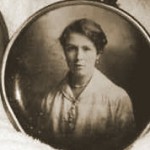 At one time genealogy only focused on the paternal line, following son to father and so on; with the singular focus of a constant surname followed through time. While the contribution of women to the continuation of the species was recognized, it was sadly neglected in terms of genealogical research.
At one time genealogy only focused on the paternal line, following son to father and so on; with the singular focus of a constant surname followed through time. While the contribution of women to the continuation of the species was recognized, it was sadly neglected in terms of genealogical research.
Following descent from the maternal line was considered to be of little account. Thankfully, those days are gone.
The Biggest Family Tree
Researching maternal lines is every bit as rewarding, important and deserving of recognition, it is after all half of your heritage.
Nothing makes this point more clear than the amazing research done by National Geographic and IBM on the Genographic Project. A study that began much the same way as any family tree project does. With the question, where do we come from? Of course, the question in this case is directed towards the human species as a whole.
The project, which focuses on tracing the migration, patterns of man from our earliest origins does it through the use of Mitochondrial DNA. DNA that can only be passed on from mother to child. Therefore, when it comes to the biggest family tree project of all it looks like the maternal line is finally getting the respect it deserves.
Genealogy Records for Women
In truth, more and more researchers are taking an interest in tracing their maternal roots. While researching female ancestors is rewarding it is also challenging, as women were virtually invisible in terms of leaving a paper trail.
Women did not:
- Own property in their own names
- Pay taxes
- Sign their names to legal documents
- Register to vote.
All these documents commonly used to trace male ancestors are of little use when hunting our elusive matriarchs. Despite this, our female ancestors did have records that were specific to women such as family bibles and diaries; additionally, they were registered either civilly or in a church at birth or baptism, marriage and death and they were recorded in the census. The main thing you need to know about researching your maternal line(s) is that it comes down to following an ever-changing trail of maiden names.
To take the tutorial “Tracing your female Ancestors: Documents and Research Techniques” join us on the Genealogy in General forum.
Image Credit: Ramona Hartley
Genealogy: Crests, Coat of Arms and Surname Origins?
February 24, 2012 by ramona
Filed under Articles, Genealogy and Surnames, Introduction to Genealogy, Latest News, Lesson 5 Articles
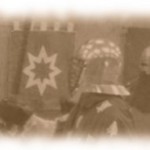
Have you ever searched for your surname in Google and come across websites for Family Crests, Coat of Arms and Surname Origins? If you are a genealogy beginner, you may even have gone to the website for information on your ancestors.
The real question here is how much value do these types of websites offer as a reliable source of information for your family tree research?
Surname origin websites, although highly entertaining and interesting, rarely have the information you really need. Many of them sell pre-written generic genealogies based on surname origin. Sadly, these genealogies often have nothing to do with sound family tree research and they can be misleading to those new to genealogy.
Surname Origins
For our first example, let us look at surname origin or surname history sites. Using the name Clegg in a Google search and randomly picking three sites, I find the following.
- The first site states that the Clegg surname “makes an impressive claim to being one of the oldest Anglo-Saxon surnames on record”. Then goes on to say the origins for the name hail from the “Rhine valley as far north east as Denmark”
- The second site surmises the Clegg surname is of English origin and comes from the Old Norse word “Kleggi” meaning at the foot of Owl Hill.
- A third surname origin website tells us that Clegg is an anglicized version of the Gaelic name “Mac Liaig(h)” which evolved into “Claque” and from there to Clegg. This site tells us that the name originates on the Isle of Mann.
From the above examples it is easy to see that while there may be a great deal of research and at least a grain of truth to each example, ultimately the information is contradictory and confusing. Therefore, while we all would like to know the origin of our family names Genealogy Beginner advises that it is best to regard these types of genealogy websites with a wee bit of skepticism.
Family Crests and Coat of Arms
Crests
A family crest historically is part of a family Coat of Arms or heraldry. It is called a crest because it was mounted on the top of a helm above the shield on a Coat of Arms. By the 13th century, a crest was used as a means of identification in tourney (think the movie – A Knights Tale) or on the battlefield.
Coat of Arms
A Coat of Arms also began as a way to identify an individual on the battlefield. Coat of Arms literally gets its name from a coat worn over armor or chain mail and was used initially to protect the armor or keep it cool under the hot sun during the crusades. Later it was decorated with identifying colors and designs in order to help distinguish friend from foe.
Ultimately a Coat of Arms is:
- An Armorial right that must be granted under due authority
- Usually the Crown or State
- Some governments (Canada) have the authority to grant the right.
Alternately, the right to bear arms can come from decent or “by virtue of ancestral right”.
What all this really means is that a coat of arms belongs to a direct family line and any website that tries to sell you your Coats of Arms is selling you a generic product that may or may not have anything to do with your lineage.
Overall, there is no real harm in surname origin or Coat or Arms websites so long as you are not misled into believing that they are an authority on your individual family tree. If you really want to know the origin of your surname (or whether or not there is a Coat of Arms associated with it) you will have to put the hard work into tracing your family tree as far back as you can, using well-established genealogy research techniques.
For more information on surname research, check out Genealogy Beginners Lesson Five: What’s in a Name?
Image Credit: Ramona Hartley
Would the Real Mr. “Whelan” (“Whalen”?) Please Stand Up
April 14, 2011 by Chris
Filed under Articles, Genealogy and Surnames, Genealogy for Beginners, Introduction to Genealogy
 According to Irish surname specialists, the surname “Whelan” is the 79th most common surname in Ireland. Thousands of Irish immigrants named “Whelan” came to America in the last two centuries. A large number of them saw their family name recorded “Whalen” by government immigration and census officials on government forms. Consequently, when searching for your long lost Irish ancestor “Joseph Whelan” or “Josephine Whelan”, be sure to look for “Whalen” also. Surname spelling variations occur with other Irish surnames also. To my bemusement, my global search for the surname “Whalen” for the entire country of Ireland in the Griffiths Valuation Survey (1840 – 1860) database produced zero households, and in the 1901 Irish census only 9 households.
According to Irish surname specialists, the surname “Whelan” is the 79th most common surname in Ireland. Thousands of Irish immigrants named “Whelan” came to America in the last two centuries. A large number of them saw their family name recorded “Whalen” by government immigration and census officials on government forms. Consequently, when searching for your long lost Irish ancestor “Joseph Whelan” or “Josephine Whelan”, be sure to look for “Whalen” also. Surname spelling variations occur with other Irish surnames also. To my bemusement, my global search for the surname “Whalen” for the entire country of Ireland in the Griffiths Valuation Survey (1840 – 1860) database produced zero households, and in the 1901 Irish census only 9 households.
Lesson Learned: If at first you don’t succeed in finding an ancestor with one Irish surname spelling, try a slight variation of that surname spelling to see what you might find.
Let us know what Irish surname spelling variations that you’ve encountered in your research and post them here.
See more Irish family history articles and lessons learned in earlier posts below and in the archives.
(This posting is from The Ballycastle Blog: Irish Genealogy and More.)
Broaden Your Ancestor’s Name Search
September 11, 2008 by Chris
Filed under Articles, Genealogy and Surnames, Introduction to Genealogy, Lesson 5 Articles, Public Records
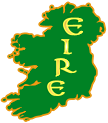 To trace the Irish origins of a client’s Irish grandfather, I recently searched a number of government record databases. The Irish grandfather’s name was Thomas Hogan. Feeling confident in pinpointing the specific person, I entered the first name, Thomas, and the family name (surname), Hogan, in the search fields of the searchable database. My confidence quickly diminished, when, unfortunately, the search results did not produce the one and only Thomas Hogan I was looking for. Being patient and persistent, I took a chance and broadened the search by simply entering the family name (surname), Hogan, in the search field.
To trace the Irish origins of a client’s Irish grandfather, I recently searched a number of government record databases. The Irish grandfather’s name was Thomas Hogan. Feeling confident in pinpointing the specific person, I entered the first name, Thomas, and the family name (surname), Hogan, in the search fields of the searchable database. My confidence quickly diminished, when, unfortunately, the search results did not produce the one and only Thomas Hogan I was looking for. Being patient and persistent, I took a chance and broadened the search by simply entering the family name (surname), Hogan, in the search field.
Although, as you can guess, this wider search produced hundreds of records, I hoped that it might uncover the correct Thomas Hogan.
Eureka! Lo and behold, the “Hogan only” search produced a record for a “Thos. Hogan”, the correct one, the grandfather I was looking for. The lesson learned: before giving up and suspending your search for a specific first name-last name combination, broaden your search to include an abbreviated first name. You may ultimately find the person you are looking for!
Footnote: To quicken the creation of a written form or record, a government official sometimes abbreviated the first name of a person in that form or record. Today, searchable electronic databases contain those same abbreviations.
See more Irish family history articles and lessons learned in earlier posts below and in the archives.
…
Where to Next?
Blank Family Tree with Step-by-Step Instructions
…
How to Research Your Family Name
May 18, 2008 by Chris
Filed under Genealogy and Surnames, Getting Started, Introduction to Genealogy, Lesson 5 Articles
 By Dakota Caudilla
By Dakota Caudilla
You’ll be surprised with the kind of information you’ll unearth when you do a research on your own family name. People you’ve never known existed, long-lost relatives, and friends who share the same lineage as you! This is what researching your own surname can do for you. If you’re not ready for some surprise findings, you’re better off leaving all this researching to others in your family.
Researching your own surname can be done through different methods. For one thing, the most popular among all the other methods of researching your own family surname is through the Internet. The wide availability, freedom of use and flexibility of the internet makes it the most popular genealogical research tool known to humankind today!
Try websites like http://www.genealogy.com and you’ll see what we mean. By typing in your surname or your ancestor’s first and last name, you’ll come up with a whole list of possible family members that you can easily fill up your family tree. These tools are generally easy to use and some websites even have communication tools whereby you can contact the possible relative directly too. These websites contain hundreds of millions of family names in their database to help people find long-lost family members.
Continue reading “How to Research Your Family Name” »
The New SCGS Virtual Surname Wall
January 21, 2008 by Chris
Filed under Genealogy and Surnames, Introduction to Genealogy, Public Records
 Hot off the presses! The folks over at the Southern California Genealogical Society have announced the availability of their Virtual Surname Wall. This database is free to the public; membership in SCGS is not required. With over a thousand submissions already, data is searchable both by family name and geographic region.
Hot off the presses! The folks over at the Southern California Genealogical Society have announced the availability of their Virtual Surname Wall. This database is free to the public; membership in SCGS is not required. With over a thousand submissions already, data is searchable both by family name and geographic region.
Access the Virtual Surname Wall at www.SCGSGenealogy.com.
…
Where to Next?
Blank Family Tree with Step-by-Step Instructions
…

